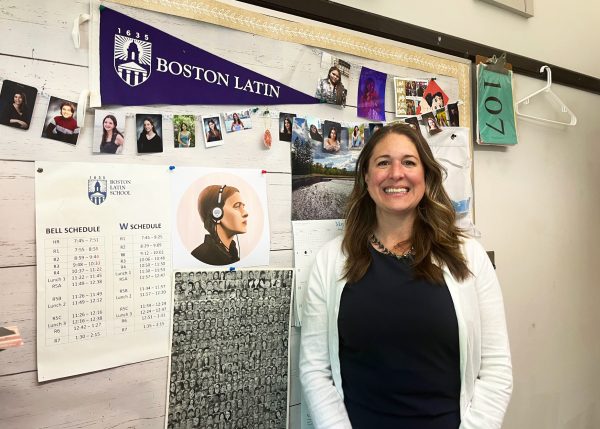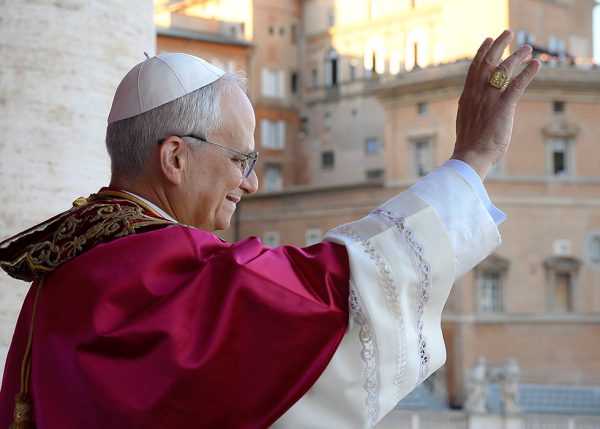Bostonians Embrace New Memorial
On January 13, the City of Boston unveiled a memorial in the Boston Common called The Embrace, dedicated to Dr. Martin Luther King, Jr. and his wife, Coretta Scott King.
Designed by artist Hank Willis Thomas in collaboration with MASS Design Group, the bronze statue depicts the hug the Kings shared after Dr. King won the Nobel Peace Prize in 1964. It stands in the center of the 1965 Freedom Plaza, which honors the names of local Bostonian civil rights leaders from the ‘50s to the ‘70s.
Standing 20 feet tall and 40 feet wide, the full monument is the first memorial built on Boston Common in 60 years and the first to honor Black Americans.
Non-profit organization Embrace Boston launched the project in 2017 in partnership with the City of Boston. Embrace Boston’s mission is to dismantle structural racism and create a more equitable city through the arts, culture, research and policy. They raised close to 10 million dollars to fund the construction of the monument.
Boston Latin School African American Studies students had the opportunity to attend the monument’s unveiling ceremony as one of the class’s many field trips to historic sites that pertain to the Black experience in America. The ceremony featured speeches and performances from various community figures and artists. Max Smith-Stern (I) and MiAsia Stokes Haith (I) were selected to present the names of the 1965 Freedom Plaza honorees.
Smith-Stern was grateful to represent BLS at the event and thought the message behind the statue could inspire collective action. “We need more love and support, and that’s such an integral thing to human rights and fighting for change,” he says.
The Embrace is intended to symbolize the love between Dr. King and Mrs. Scott King and the impact that has on us. In the image that the sculpture was inspired by, Dr. King’s weight is on her as he wraps his arms around her, and his wife holds him up. This represents how Mrs. Scott King physically and metaphorically supported Dr. King and how the civil rights movement extends beyond one figure.
“It is a big testament of not only Dr. King and what he stood for, but that this city is openly embracing of the African American culture, Black experience, Black people, and I think this city still needs more visible signs of that,” says African American Studies and World History teacher Mr. Brian Smith.
The Kings had an extensive history here in Boston. Dr. King and Mrs. Scott King met for the first time in Boston when Dr. King was studying for his PhD at Boston University’s School of Theology and Mrs. Scott King had a fellowship at the New England Conservatory of Music. The two had their first date at Boston Common. On April 23, 1965, Dr. King returned to Boston to lead the 1965 Freedom Rally, a march from Roxbury to the Boston Common, and gave a speech in front of 22,000 people.
Mr. Smith reflects on why it was notable that BLS students attended the event, saying, “Dr. King was Boston Latin. The best education that a public institution could offer to all students, no matter race, creed or color. Based on their ability, based on their merit. That’s what Dr. King was all about, right?”
The art piece has been met with mixed reviews, including critiques on its confusing shape. Sofia Francisco (I), an African American Studies student who attended the unveiling, however, thinks that if discussion solely surrounds the memorial’s appearance, people will miss the message that the statue is supposed to send.
“Everyone should just look up, try to research and understand what Embrace Boston is trying to do and why the statue was put there in the first place,” she says.
Hundreds have already gathered to celebrate the statue and honor Dr. King’s legacy, which has encouraged further discussion in the continued work and challenges Boston has ahead.
Francisco concludes, “Most of us have lived here our entire lives, and for a lot of us we will continue to be part of this city and continue to build it, and grow the culture in Boston. So it’s good for us to see the history of it, and how it can be even better in the future.”






